Franklin Wolff recounts that he met his first wife in 1915 after he had moved to the theosophical community known as “The Temple of the People,” which was located in Halcyon, Calif.:
It was at Halcyon that I met the woman who later became my wife. She was Sarah A. Merrell-Briggs—a married woman at the time. She had contributed funds for the publishing of a book of certain of the messages given out at Halcyon and the book was called From the Mountain Top. She was assigned to the office of Chief of Propaganda for the association and I became her helper. In this way, I continued to function until I was finally drafted into the First World War [in] 1917. We had become rather close in our association in the work. After I was drafted and was employed in the army, she was divorced, and I returned back in 1919 about January or February. We continued more or less the association and, finally, on the 25th day of June 1920 were married. And that was the beginning of a close association that lasted until her death in 1959.[1]
As Wolff notes, Sarah was married at the time that he met her; in fact, she had been married once before—to George Furness, at the age of fifteen. At the age of seventeen, Sarah gave birth to George Furness, Jr., who would die in of pneumonia in 1910 at the age of sixteen. George Jr. was apparently raised by one or both sets of his grandparents, as Sarah would soon leave him and his father, finding secretarial work at an upstart manufacturing firm in Chicago.
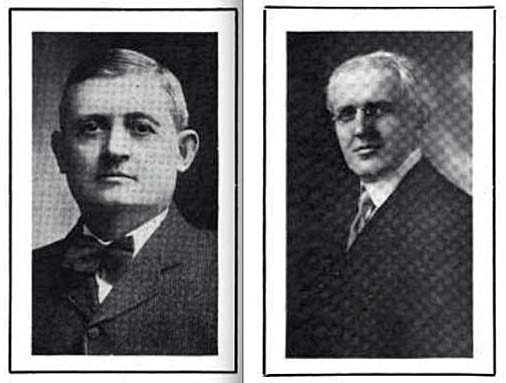
George Abington Briggs and his father, Abington J. Briggs, were successful Iowa-born bank managers who in 1896 relocated to Chicago and partnered with local lawyer S. A. Buffington to organize the Chicago Telephone Supply Company, which built phone equipment for independent networks. By 1900, father and son had turned their company into a major player in the industry, with about 250 people in total employed in the Chicago area. The company had found a niche market in the rural areas of the country and had a reputation for producing quality 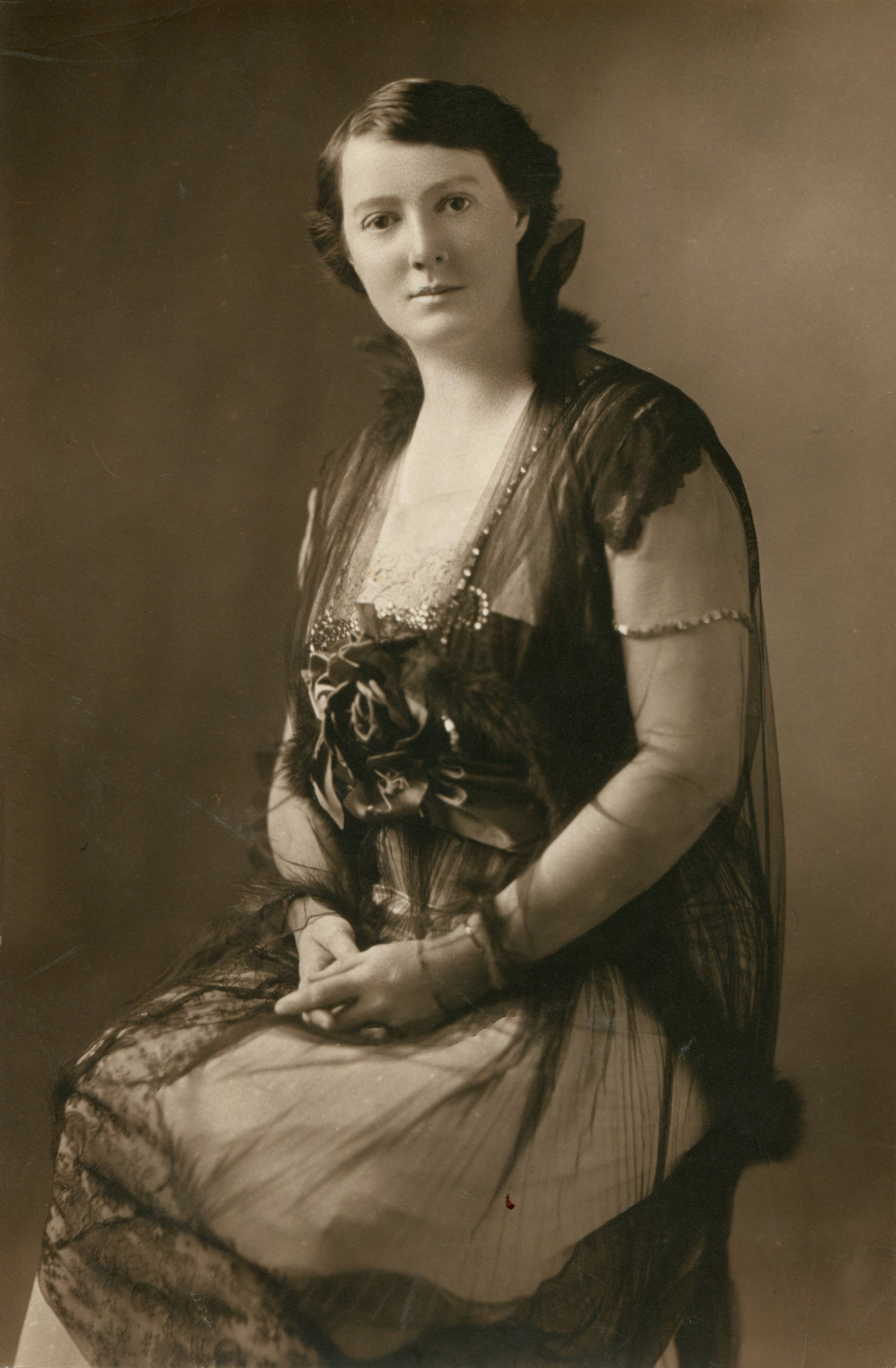 equipment.
equipment.
Sarah was George’s secretary at the company, and the two soon became romantically involved. They were married in 1900; George was thirty-one and Sarah was twenty-four. In 1902, in need of more (and less expensive) manufacturing space, the Chicago Telephone Supply Company moved to Elkhart, Indiana, about 100 miles east of Chicago. There George and Sarah enjoyed an affluent lifestyle. George became involved in politics, socializing with the Democratic Party’s three-time presidential candidate, William Jennings Bryan, as well as the investigative journalist, Lincoln Steffans; Sarah’s interests would soon lead her elsewhere.
In 1908, the couple welcomed James Abington Briggs to the world, whom Wolff would help raise and would later call “a strong masculine support in connection with my work.”[2] Several years after James’s birth, Sarah would again leave a husband and a son; this time, however, the financial gains of marriage gave her the freedom to pursue a growing attraction to the occult. She moved to Washington, D.C., where she became active in the Oriental Esoteric Society (O.E.S.), which was headed by Agnes Marsland.
In 1902, Marsland was associated with Albert Sarak (also known as “Alberto de Sarak,” “Count Alberto de Das,” and “Rama,” among other names). Sarak claimed to be a medical doctor, the son of a Tibetan Raja and a French noblewoman, and to have been instructed personally by the Mahatmas of Tibet.[3] He was visiting Washington as the “General Inspector of the Supreme Council of the Order of the Initiates of Tibet” to establish a local branch of the Order, which was christened the “Oriental Esoteric Head Center of Washington.”
As reported in the Washington Post, Sarak gave “exhibitions of occult powers” (including the “materialization” of fish) over the course of three hours to several hundred people, including a large number of members of Congress; Marsland served as his translator at this event. In 1903, Marsland accompanied Sarak to Mexico City, where he established another branch of the Order of the Initiates of Tibet; in 1905, she returned to Washington to administer the Center there after Sarak returned to his headquarters in Paris.[4]
Beginning in 1908, Marsland published a journal called the Bulletin of the Oriental Esoteric Center; in 1910, after Sarak expelled Marsland from the Order of the Initiates, the name of the journal was changed to the Bulletin of the Oriental Esoteric Society.[5] Interestingly, as noted by International Association for the Preservation of Spiritualist and Occult Periodicals, neither incarnation of this journal mentions the teachings of Sarak and the Initiates of Tibet:
Although the Center was the organ of the teachings of Sarak and the Initiates of Tibet until 1910, the journal never mentions either and consisted largely of meeting notices, platitudes from Marsland’s lectures, devotional passages from the likes of Rama Prasad, and exhortations to silence the reason and submit the mind to the internal whisperings of the Tibetan Masters.[6]
The last observation is significant, in that it lays clear Marsland’s ties to theosophical teachings. Indeed, as Dave Vliegenthart notes, Marsland’s 1910 book, First Principles of Esotericism, essentially “repackages theosophical teachings with a practical twist.”[7]
Sarah was involved with O.E.S. about the time Marsland’s book was published, and in 1911, she published her own article in the Bulletin titled “I Am.” A copy of this article is available in the Wolff Archive, as is an O.E.S. “esoteric lesson” dated August 7, 1905 that is signed “Rama the Disciple” (one of Sarak’s aliases). Sarah’s involvement with the O.E.S. does not appear to have lasted long, for by 1913 she was involved with another organization—The Universal Brotherhood.
The Universal Brotherhood—also known to its members as the Integral Fellowship, the Mahacakra Society, and the Great Circle—was founded by Merwin-Marie Snell, an early and well-published scholar of comparative religion, a convert to Roman Catholicism, and a member of a prominent New England family.[8] In 1893, Dr. Snell was appointed the Director of the Scientific Section of the World’s Parliament of Religions, which was held in Chicago during the World’s Columbian Exposition. In his closing address to the Parliament, which was titled “The Future of Religion,” Snell pondered whether it was possible to form a universal religious body in which the world’s religions could be organized as a whole:
Is it conceivable that all diversities of race and talent and thought and tendency and environment may ultimately be coordinated into a world-wide organization? Can the religious federation of humanity be regarded as within the limits of a rational and legitimate hope?[9]
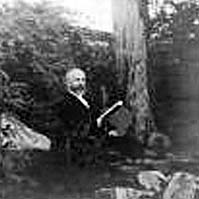 Snell thought that there could be, and in 1907 he established the Universal Brotherhood as an organization to fulfill this prophesy. As such, it would “embody all the thought and aspiration and virtue and emotion of all humanity; it will draw together all lands and peoples, all kindreds and tongues, into a universal brotherhood of love and service; it will establish upon earth a heavenly order, and make all incarnate spirits vibrate with the harmony of the celestial spheres.”[10]
Snell thought that there could be, and in 1907 he established the Universal Brotherhood as an organization to fulfill this prophesy. As such, it would “embody all the thought and aspiration and virtue and emotion of all humanity; it will draw together all lands and peoples, all kindreds and tongues, into a universal brotherhood of love and service; it will establish upon earth a heavenly order, and make all incarnate spirits vibrate with the harmony of the celestial spheres.”[10]
The Universal Brotherhood (which is still in existence) functioned as a secret society and sought to unify all of human knowledge and human religious activity under the concepts of Integrality and Universality. During Sarah’s involvement, the society issued its lessons by correspondence, which it guarded by an intricate set of rules that dictated strict secrecy. A detailed application form used for membership in the Universal Brotherhood can be found in the Wolff Archive, as well as a number of typescript lectures (“sūtras”) on metaphysical topics. This material contains Sanskrit terminology for organizational titles; the organization’s correspondence (there are several letters in the Wolff Archive that relate to Sarah’s involvement with this group) also uses Sanskrit vocabulary as pseudonyms.
The Universal Brotherhood lessons in the Wolff Archive are dated 1913. Sarah apparently was living in Chicago at this time, where she had met George W. Wiggs. Wiggs was registered with the Chicago Board of Trade as a grain and stock broker and ran a system of bucket shops in Chicago that plied what today is called “futures trading,” but at the time, was considered illegal gambling; he was a director in the failed Columbian National Bank in Chicago; and, he was a publisher of occult literature.[11] Wiggs was also a member of the Temple of the People, a theosophical group organized by William Dower and Francia La Due in protest to Katherine Tingley’s leadership of the American section of the Theosophical Society. Wiggs encouraged Sarah to join the Temple of the People, which she did, in 1912.[12] The following year she visited the group in Halcyon, Calif., where the Temple of the People had relocated in 1903.
The May 1914 issue of the Temple of the People’s monthly bulletin notes that a number of the “Masters’ messages . . . are to be put into attractive book form” and that “our devoted Sister, Mrs. Sadie [Sarah] Briggs, has been authorized to proceed with this important work and it is already well under way.”[13] This book would be published later that year under the title, From the Mountaintop, with the help of a $500 donation made by Sarah. The Temple believed that “that these messages and teachings once put in book form will be considered as of equal occult and spiritual worth with such [important Theosophical] books as The Voice of the Silence and Light on the Path.”[14]
Sarah remained actively involved with both the Universal Brotherhood and the Temple of the People during the period between 1913 and 1915. In January 1915, she traveled to New York to give a lecture on the Temple of the People at Julia Seton’s New Thought Church and School, which according the Temple’s bulletin “was forceful as well as soulful and reveals that Mrs. Briggs is well qualified to contact the public in this capacity”; it also reports that “Mrs. Briggs during her stay in New York through the holiday season . . . gave some parlor talks and met many people as a representative of the Temple work.”[15] By this time, Sarah had decided—with encouragement from Mr. Wiggs—to move to Halcyon and the Temple of the People. As she explains in a letter to Mr. Snell (a transcript of which is in the Wolff Archive), her work with the Universal Brotherhood primarily involved the production of documents, and she felt the need to work with people. Accordingly, she resigned from the Brotherhood and with her six-year old son, moved in August 1915 to Halcyon where she had purchased a small home.
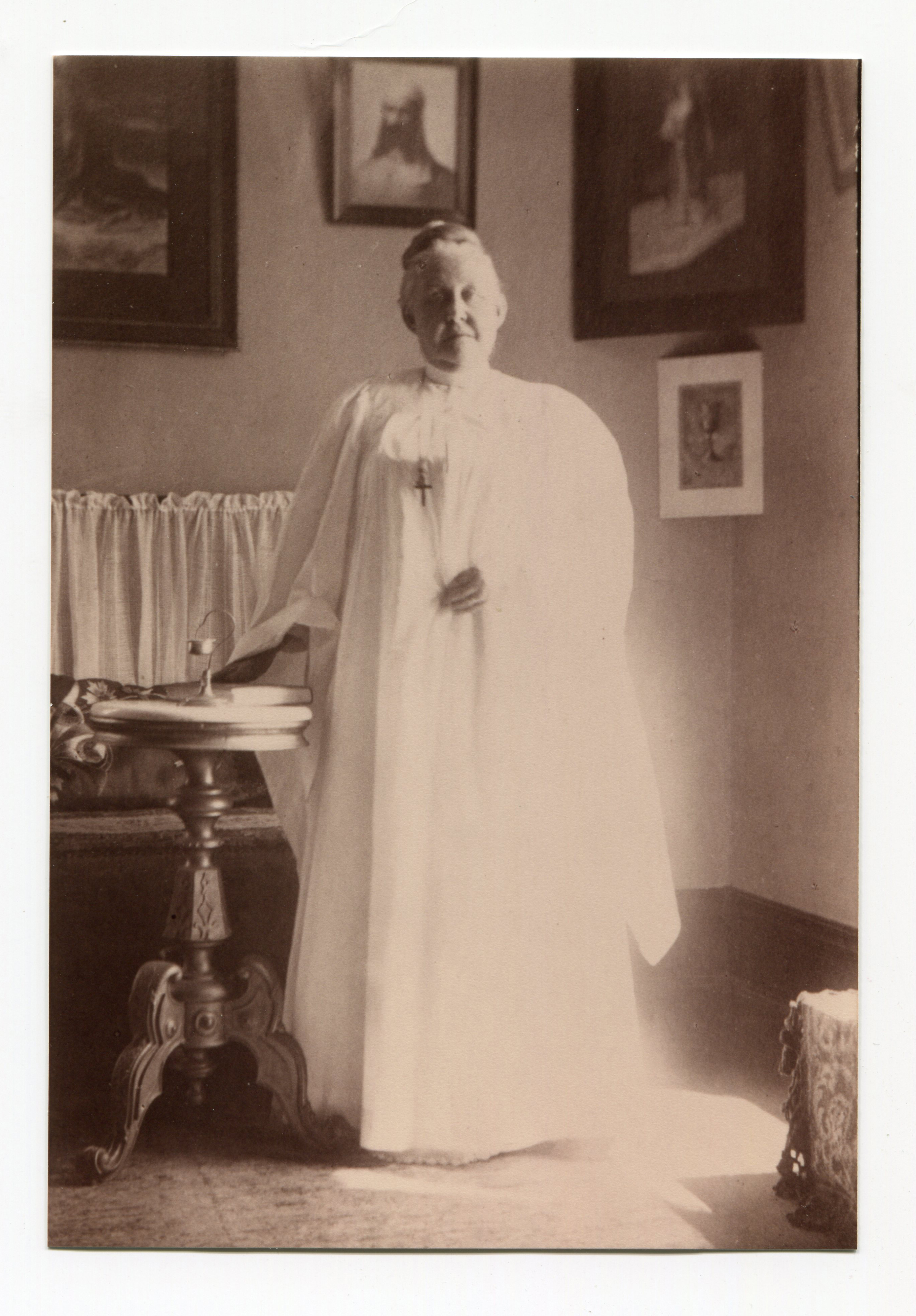 The personal connection that Sarah was seeking came in the form of Francia La Due (Blue Star), with whom Sarah had been corresponding for several years (and from whom Sarah would continue to receive letters even after she had moved to Halcyon). La Due had urged Sarah to move to Halcyon and in a letter shortly after her lecture in New York, commented that it was “clearly a Temple lecture.”[16] Another aspect of La Due’s persona that undoubtedly attracted Sarah was her ability to channel the Theosophical masters, particularly Hilarion, Morya, and Koot Humi, whose messages guided the work of the Temple of the People. As the two women grew close, La Due would teach Sarah the “art” of channeling these Masters, and the Wolff Archive contains a large number of Sarah’s channeled messages from 1920 through 1922.
The personal connection that Sarah was seeking came in the form of Francia La Due (Blue Star), with whom Sarah had been corresponding for several years (and from whom Sarah would continue to receive letters even after she had moved to Halcyon). La Due had urged Sarah to move to Halcyon and in a letter shortly after her lecture in New York, commented that it was “clearly a Temple lecture.”[16] Another aspect of La Due’s persona that undoubtedly attracted Sarah was her ability to channel the Theosophical masters, particularly Hilarion, Morya, and Koot Humi, whose messages guided the work of the Temple of the People. As the two women grew close, La Due would teach Sarah the “art” of channeling these Masters, and the Wolff Archive contains a large number of Sarah’s channeled messages from 1920 through 1922.
Mrs. La Due, who was in poor health, was evidently preparing Sarah to follow her in the role of as the “Inner Head” of the organization, and Wolff reports that Blue Star explicitly stated as much in 1919: “when in conference with B.S. (Blue Star) she remarked to me that Sarah would have to prepare to take over the work as head of the Order of the 14 and that I should prepare for position as Head of the priesthood.”[17] Mrs. La Due died on July 19, 1922, and as detailed in the section of the Wolff Archive titled “Organizations and Group Work” (under Temple of the People), a political drama would soon force Franklin and Sherifa Wolff to depart Halcyon.
As documented in the section of the Wolff Archive mentioned just above, Franklin and Sarah would explore associations with a number of other groups before establishing their own theosophical organization in December 1928, which they called “The Assembly of Man.” During their involvement with the Sufi Order of the West (1923), Inayat Khan had bestowed the title “Sherifa” upon Sarah (Arabic for “honored”), and this is the name by which she is most well-known (and which is generally used in the descriptions and reports found in the Wolff Archive). At the time of the founding of their own organization, however, Sarah was going by the name ‘Sheila’.
Sarah was well-prepared for this undertaking. She had first been exposed to the theosophical underpinnings of group work in her association with Agnes Marsland’s O.E.S.; she would emulate the lesson work of the Universal Brotherhood (down to the use of Sanskrit pseudonyms for the lesson’s authors) in the educational material produced by the Assembly of Man, as well in its intricate application process and guarding of “secret doctrines” found in advanced lessons; and, she would employ some of the rituals used by the Temple of the People (such as the notion of a graduated “priesthood” and an annual August “Convention”). Most importantly, however, Sarah’s channeling of the Theosophical masters grounded the authority of the Assembly of Man, just as Blue Star’s had done for the Temple of the People.
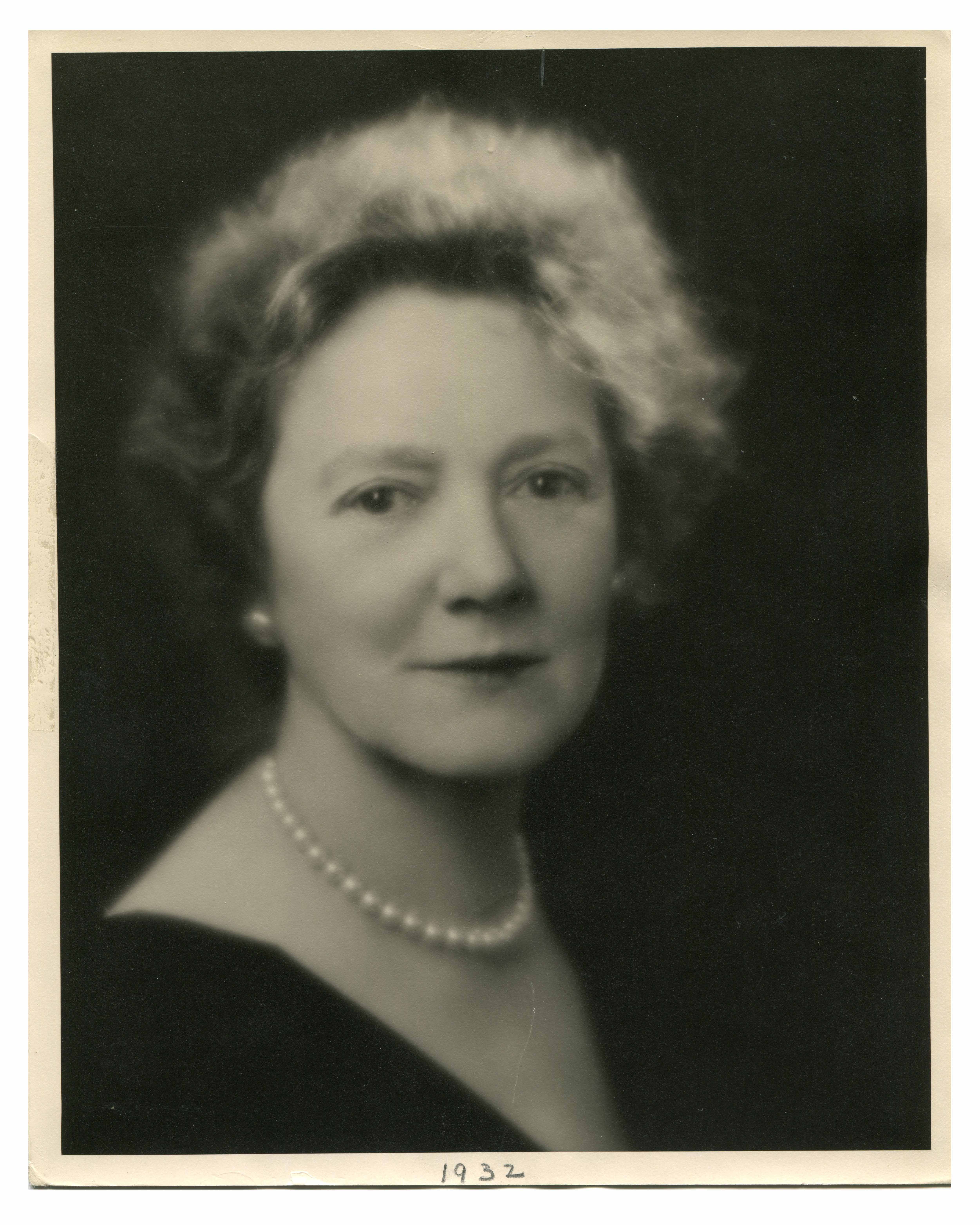 In 1932, Sherifa began to channel new entities, but the manner of presentation and the content expressed was different than the “passive” channeling she had learned from Mrs. La Due. The first entity was called “Senior,” who claimed to have lived in Atlantis and spoke with a Scottish brogue (Wolff’s poem “The Atlantean Sage” in Pathways Through to Space describes his relationship with Senior). Several years later, Sherifa began channeling an entity that she called “Junior,” followed by his twin “feminine” aspect, the “Golden One.” The Wolff Archive owns all the records that were kept of this channeling.[18]
In 1932, Sherifa began to channel new entities, but the manner of presentation and the content expressed was different than the “passive” channeling she had learned from Mrs. La Due. The first entity was called “Senior,” who claimed to have lived in Atlantis and spoke with a Scottish brogue (Wolff’s poem “The Atlantean Sage” in Pathways Through to Space describes his relationship with Senior). Several years later, Sherifa began channeling an entity that she called “Junior,” followed by his twin “feminine” aspect, the “Golden One.” The Wolff Archive owns all the records that were kept of this channeling.[18]
The 1930s and 1940s were an active time for the Assembly of Man, as Sherifa and Franklin traveled the country, Franklin giving lectures, and Sherifa dispensing private instructions to students. In addition, the couple held an annual Convention in the Sierras, where they erected a granite ashram over the course of these twenty years, and purchased a ranch outside of Lone Pine, Calif. to help facilitate this work. By 1950, however, Sherifa’s health was beginning to decline, and it would prove to be a long fading. Unable to return to the mountains, the couple confined the work of the Assembly to their San Fernando home; in June 1956, after Sherifa expressed a desire to live near the sea, they moved to Santa Barbara. Wolff reports that “at first she had some enjoyment of life near the sea, for it was visible from our home,” but as her strength deteriorated, this too faded, and Sarah A. Merrell-Wolff died on February 23, 1959.[19]
Reflecting on his marriage to Sherifa twenty years later, Franklin Wolff remarks that
she was dynamic and queenly—a person in whom power rested easily. I have always been the philosopher. We did a work in which we went across the country and gave lectures, and she gave her private instructions; and we, ultimately, built an ashram in the Sierra Nevada . . . This work had essential difficulties for both of us. When two diametrically opposite types work together, there are difficulties of adjustment.[20]
Elsewhere, he recalls that
There were certain symbols that were received by Sherifa at the time [they married] that implied that we were predestined, as it were, to associate ourselves for the work. And in point of fact, we married simply to render this association for the work more feasible, and not for biological reasons. She was eleven-and-a-half years older than I was, and, although I was intellectually stronger than she was, yet in the general field of human relationships, in the field of social life and the like, she was definitely more mature.[21]
In many ways, Sherifa’s role in the lifework of Franklin F. Wolff seems analogous to that of The Mother in Aurobindo’s work: both oversaw and ran the organizational and educational facets of their combined work, which gave their spiritual partners the freedom to contemplate and produce a philosophical opus. And, in fact, many of Sherifa’s students did call her “Mother.”[22]
Endnotes
[1] Franklin Merrell-Wolff, “Autobiographical Material: Part 1—A Recollection of My Early Life and Influences” (Lone Pine, Calif.: July 6, 1978), audio recording, 7.
[2] Franklin Merrell-Wolff, “Running Commentary Following Gertrude’s Death,” part 46 (Lone Pine, Calif.: November 19, 1981), audio recording, 2-3. For details on the life of James Briggs, see Wolff’s recordings, “Memorial for James Briggs, Parts 1 & 2” (Phoenix, Ariz.: September 21 & 24, 1974).
[3] The Washington Times, March 19, 1917:1 & 9.
[4] Copied in full in The Radiant Centre 3 (3): 2-3 (March 1902). As documented in the archives of the International Association for the Preservation of Spiritualist and Occult Periodicals (IAPSOP), Sarak’s real name was Alberto Santini-Sgaluppi,
an Italian medium, confidence man and prestidigitator who had been jailed for fraud in Italy, Belgium, France and Spain and expelled twice from the Theosophical Society. One of his more notable tricks was the instantaneous hatching of goldfish from caviar—exposed, it is said, when his small son recognized the fish as his pets, or, alternatively, when a rubber reservoir containing fish was found under his garments. As General Inspector of the Supreme Council of the Order of the Initiates of Thibet, Sarak founded centers all across South America, usually leaving one step ahead of exposure, then in New York, Baltimore, Washington, D.C.[,] where he captivated Agnes Elizabeth Marsland (1855-c. 1939), Mexico City, and then Paris (announced in the first issue of [L’Etoile D’Orient]), where he ensnared the aging Barlet. . . . On Marsland, see James Santucci, “H. N. Stokes and the O. E. Library Critic,” Theosophical History 1/6 (April 1986) 129-139. On Sarak, see also the note under Bulletin of the Oriental Esoteric Center/Society; Gaston and Henri Durville, “Un Audacieux Fraudeur de Phénomènes Psychiques,” Revue de Psychisme Experimental (November 1910): 51-58, and “Le Mage Prestidigitateur sera-t-il Accusateur ou Accuse?” and “The Order of the Initiates of Tibet,” in the same journal the next year; “Dr. Graf von Sarak,” Mitteilungen der Deutschen Gesellschaft für Psychische Forschung, December 1910. See also the entertaining discussion by Henry Ridgely Evans, The Old and the New Magic (Chicago: Kegan Paul, Trübner, 1906), 254-270, who reports his meeting with Sarak in Washington.
From the IAPSOP Summary for the journal, Etoile d’Orient. See also Jean-Pierre Laurant, “Bartlet, Francois-Charles” in Dictionary of Gnosis and Western Esotericism, ed. Wouter J. Hanegraaff (Leiden: Brill, 2006), 162.
[5] According to IAPSOP, “in 1910, Sarak tried from Paris to exercise control over the Washington Center (and its finances) and the Center was re-organized as the “Oriental Esoteric Society” to exclude him. He promptly retaliated by canceling the charter of the Center and expelling its head, Miss Agnes E. Marsland. See the IAPSOP Summary for the journal, O. E. Library Critic.
[6] See the IAPSOP Summary for the journal, Bulletin of the Oriental Esoteric Society.
[7] Dave Vliegenthart, The Secular Religion of Franklin Merrell-Wolff: An Intellectual History of Anti-Intellectualism in Modern America (Leiden: Brill, 2018), 86.
[8] Charles Brodie Patterson, “Merwin-Marie Snell, PhD.: A Biographic Sketch” in Mind 13 (3): 240-246 (March, 1904).
[9] Merwin-Marie Snell, “The Future of Religion: A Farewell Address Delivered Before the Parliament of Religions at Its Last Session,” The Open Court, a Quarterly Magazine, 7 (319): 3823-5 (Oct. 5, 1893). As Nicholas Laccetti notes in “On the Papal World-Tree, or, An Esoteric Meditation on the Papacy,” Snell thought that the Papacy revealed that the ideal of universality was indeed already present in the world.
[10] Ibid.
[11] Two of his publishing houses, The Occult Publishing Co., which was consolidated with the Sterling Publishing Co., are listed in the 1913 issue of the American Book Trade Manual as having their offices in Elkhart, Ind. This might reflect an investment by Sarah and/or George Briggs in Wiggs’ publishing concerns.
[12] Franklin F. Wolff, encouraged by John Varian, also joined the organization in 1912.
[13] The Temple Artisan 14 (12): 181 (May 1914). This news column also notes that Sarah’s husband, George, “is making a brief sojourn at Halcyon, returning the first part of May.”
[14] Ibid.
[15] The Temple Artisan 15 (9): 181-2 (February 1915).
[16] “Letter from Francia La Due to Sarah Briggs,” dated “Early 1915.”
[17] Franklin F. Wolff, “Statement of Credentials of Lodge Status of Sarah.” In a channeled message, Sarah is advised by Hilarion that “Your work my child is important lodge work and you should take and function in the place vacated by B. S. when that time comes, but that functioning must be according to hierarchical law. You would be known as Inner Guard and will work exoterically with [Dower], but will work esoterically with F. A. B. and [Franklin Wolff]. If [Dower] becomes unmanageable, the work will go on and F .F .W. will function in that office esoterically as well as esoterically.” Sarah A. M. Wolff, “Channeled Messages 1922,” 23.
[18] Unfortunately, this material has not been made available. For a more detailed description of Sherifa’s channeling, see Chapter 15 of Doroethy Leonard, Franklin Merrell-Wolff: An American Philosopher and Mystic (Self-published, 2017).
[19] Franklin Merrell-Wolff, “Autobiographical Material: My Life with Gertrude (Part 1)” (Lone Pine, Calif.: October 31, 1978), audio recording, 1.
[20] Franklin Merrell-Wolff, “Memorial Service for Gertrude” (Lone Pine, Calif.: June 4, 1978), audio recording, 3.
[21] Ibid., 4. To set the record straight, one should not read Wolff’s comment that he and Sherifa were not married “for biological reasons” to imply—as has been reported elsewhere—that their relationship was a chaste one. Indeed, as early as 1916, Wolff records in his journal a number of occasions on which the couple was “close.”
[22] See, for an example, Assembly of Man Students, “Memorial Tribute to Sherifa” (January 14, 1960), audio recording.
